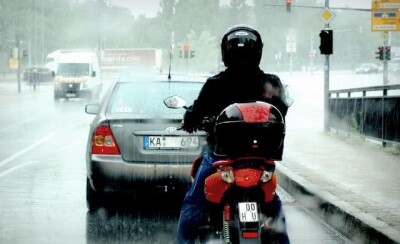Riding a motorcycle is adventurous and exhilarating. You surely have seen racing on TV; you’ve seen a lot of motorcycle riders in your area, and you want to get in on the fun. While it all seems like innocent fun, the truth is, motorcycling can be very dangerous if proper precautions are not taken. The cold reality is that motorcyclists are 30 times more likely to die in a crash than people in a car. The causes range from drinking alcohol before riding, not wearing a helmet, and unfortunate interactions with other motorists. This is why thousands of motorcyclists get killed every year while riding.
Keep your riding skills honed by taking an advanced riding course:
There is no better advice than to practice and increase your skills by taking an advanced riding course in your area. These types of courses can teach you the basics as well as advanced techniques, such as how to perform evasive emergency maneuvers, collision avoidance maneuvers, advanced turning, control tips, and braking techniques. Additionally, an approved safety course may make you eligible for an insurance discount and, in some states, allow you to skip the road-test and/or the written test part of the licensing process altogether. That said, be aware that riding with a passenger requires considerably more skill.
Inspect your motorcycle when preparing to ride:
Making sure that your motorcycle is fit for the road and ensuring it is as safe as possible is very important for practicing safe riding. Should something be wrong with your motorcycle, it will be in your best interest to find out before hitting the road. To make sure that your motorcycle is in good working order, perform a visual inspection on the tires, headlights, taillights, turn signals, mirrors, handlebars, and fuel level. Then, check the controls - clutch, brake, and throttle - for proper function. Basic maintenance also goes a long way. Inspect the brake hardware, oil, tire pressure, and horn periodically to ensure everything is within spec. You'll also want to be diligent about looking for leaks while you're at it.
Check the weather before heading out; make sure to avoid bad weather:
Rain, ice, and snow can compromise your ride. Water (from rain or ice) makes the road surface wet, cuts your visibility, and reduces your tires’ grip on the road, which can make cornering tricky. If you have to travel in bad weather, avoid making sudden maneuvers. If possible, it’s better to choose a different day to ride if inclement weather is in the forecast.

Wear the right motorcycle gear:
Motorcycle gear protects you from extreme temperatures, debris, and injuries in case of an accident or a skid. Appropriate gear includes a good quality helmet, goggles, leather jacket, leather pants or chaps, over the ankle boots, and non-slip gloves. Dress in layers to adjust to any changing weather throughout the day. Consider attaching reflective tape to your clothing and make yourself visible to other drivers. You should also have motorcycle saddlebags and luggage bags to hold personal belongings, an extra pair of gloves, and googles.

Follow traffic ruls, use your signals, and drive the speed limit:
This may sound cliche, but it’s important to follow the traffic rules, use signals, and drive the posted speed limit to avoid accidents. Be well aware of local traffic laws and rules of the road. According to the NHTSA, 32% of fatal crashes involving motorcyclists have excessive speed as a contributing factor. So, obey the speed limit; the faster you go the greater chances of an accident are.





